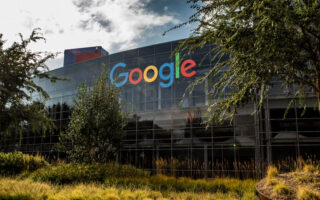The big questions swirling around the market rally
The S&P 500 is closing in on a record after the Fed signaled it would be cutting interest rates next year. Investors are betting that the U.S. economy will pull off the rosiest of outcomes: a soft-landing and cheaper borrowing costs.
But some Wall Street veterans are already raising questions about the Fed-driven rally, and debating its durability.
The stock surge was almost unthinkable a year ago, when Wall Street delivered lackluster forecasts for the economy and markets because of recession fears and stubbornly high inflation. Instead, the benchmark S&P 500 has rallied, closing yesterday within 1.6 percent of the peak it reached in January 2022.
The latest jolt of good news for the bulls: The Fed on Wednesday signaled that it would cut interest rates three times next year as it predicted inflation would cool. Global stocks and bonds have soared since then, with investors increasingly confident that a period of tight credit is coming to an end.
But the Fed’s dovish pivot has put Europe’s central bankers in a bind. Futures traders were betting yesterday that the European Central Bank would follow the Fed’s lead and forecast aggressive cuts next year. Instead, Christine Lagarde, the E.C.B. president, spent much of her news conference batting down such expectations.
Wall Street is also divided on whether the Fed can deliver rate cuts. “I’m still not convinced that we’re going to get the cuts the Fed is talking about, and certainly not the cuts the market is talking about for next year,” Lee Ferridge, the head of multi-asset strategy at State Street Global Markets, told DealBook.
In the opposite camp: Goldman Sachs economists predict that the Fed will begin lowering borrowing costs in March, and futures traders have forecast cuts totaling as much as 1.5 percentage points next year.
Is the Fed pivoting too soon? Ferridge notes that U.S. consumers are still spending, as evidenced by yesterday’s strong retail sales data, and that the economy and labor markets are still growing robustly. Those conditions could release the inflation genie from the bottle. “The inflation fight is not won,” he said.
And Larry Summers, the former Treasury secretary and a vocal critic of the Fed’s handling of inflation, has voiced concerns that the U.S. central bank is sending mixed messages.
Why cut rates if the economy looks pretty good? That’s a question market-watchers are asking, including the economist David Rosenberg. The Fed’s predicted cuts would suggest the U.S. is on the brink of recession, he said. If that’s the case, why are investors buying stocks at such a furious clip?
Ferridge noted a similar disconnect. “That sort of shows you ‘the puzzlement in the market” about the Fed’s messaging this week, he said. “What do they know?”
HERE’S WHAT’S HAPPENING
The Biden administration pushes Israel to narrow its campaign in Gaza. Jake Sullivan, President Biden’s national security adviser, urged Israeli officials to end their large-scale ground and air operations by the end of this year and focus on more-targeted tactics, The Times reports. That suggestion is the latest sign that Biden, who has publicly backed Israel after the Oct. 7 Hamas attacks, is under pressure to rein in the country’s military campaign.
The E.U. opens the door to Ukraine joining the bloc. Even as Hungary forced a delay in financial aid to Kyiv, news that European leaders were willing to begin accession talks provided some hope for Ukraine. That said, joining the E.U. would take years if it even happened and American military assistance to Ukraine is still in limbo.
General Motors and its autonomous vehicle division cut jobs. Cruise is laying off about 900 employees, or nearly a quarter of its work force. The move is part of a turnaround effort after the company pulled its vehicles off the roads following an Oct. 2 accident involving a pedestrian. Meanwhile, G.M. is cutting 1,300 workers in Michigan.
Netflix resumes advertising on X. The streaming giant is again running ads on the social network, The Wrap reports, after joining a boycott to protest Elon Musk’s endorsement of an antisemitic conspiracy theory. Meanwhile, Musk has told lenders to his $44 billion takeover of the company that they won’t lose money on the deal, despite a huge loss in ad revenue, according to The Financial Times.
Peltz brings a blast from Disney’s past
As the activist investor Nelson Peltz formally began a proxy fight at Disney, his second bout in as many years, he’s drawing on a figure from the company’s past: Jay Rasulo, its C.F.O. from 2010 to 2015.
The choice of Rasulo as a director nominee (along with Peltz) is meant to draw a contrast between the Disney of yesteryear and the company of today that faces plenty of challenges.
Rasulo once was considered a potential successor to Bob Iger as C.E.O. A two-decade veteran of Disney, he oversaw the entertainment giant’s theme-park business, including an overhaul of the California Adventure resort and the opening of Hong Kong Disneyland. In 2009, he became C.F.O., and left in 2015 after Tom Staggs was promoted to C.O.O. from leading the parks business.
Rasulo told The Times that his nomination didn’t mean he wanted to return to management: “We can ask the right questions in the boardroom,” he said. “We can right a ship that I’m very fond of.”
Peltz is trying to remind Disney shareholders of better times. “I want Disney to get back to the way it was when Jay Rasulo was here as C.F.O., because that’s when the company understood the taste and smell of success,” the investor told The Wall Street Journal.
Ike Perlmutter, the former Marvel chairman who is one of Disney’s largest individual shareholders, is another former Disney executive involved in the activist campaign. (Perlmutter was pushed out of Disney in the spring after years of clashing with Iger and others.)
But Rasulo’s background in finance may clash with creatives at Disney. The Journal reports that, as C.F.O., he focused on the profit potential from sequels:
“He would tell investors Disney’s priority was making more content like ‘Toy Story,’ because big franchises were the best way for Disney to grow quickly and generate lots of income.”
That focus appears to be wearing thin at Disney, after the latest installments in the Marvel and “Indiana Jones” universes underperformed. At the DealBook Summit, Iger conceded that the company was producing too many sequels without regard for quality: There has to be a reason “beyond commerce” to make one, he said.
“Go on tour like Taylor Swift, but a Blackstone version?! I love it!”
— Steve Schwarzman, Blackstone’s co-founder and C.E.O., in the investment giant’s Taylor Swift-inspired holiday video. The cheekily self-aware clip explores the joys of alternative investing, and features executives like Jon Gray, its president, and lots of glitter.
The PGA Tour’s infighting isn’t over
The deadline to finalize a deal between the PGA Tour and Saudi Arabia’s sovereign wealth fund is less than three weeks away, but the American golf organization is still riven by internal conflict and mistrust between players and executives, DealBook’s Lauren Hirsch and The Times’s Alan Blinder report.
A reminder of how we got here: The tour and the Public Investment Fund signed a tentative agreement on June 6 to combine the PGA Tour with LIV Golf, its Saudi-backed rival. The deal was done in secret, with the tour’s players and most of its board members kept in the dark. Many details, including valuation and governance, need to be resolved by Dec. 31, though the talks can be extended.
The tour has made some concessions. In August, Tiger Woods joined the board, evening the number of players and outside directors at six each. The tour also agreed to let Colin Neville, a banker who was advising the players, to be kept in the loop on negotiations with the P.I.F.
But many players are still angry. “Since June 6, trust has been broken at the top level,” said Adam Scott, who chairs the tour’s Player Advisory Council. “Nothing has changed to reinstate that trust.”
The frustrations include their limited influence in the appointments of outside directors. The resignation from the board by the AT&T C.E.O. Randall Stephenson, whom many players supported, also left a sting. (Two players were on a committee that recommended Stephenson’s successor, Joseph Gorder.)
Some say disagreements are normal. “I’ve learned that any great board, you need disagreement in order to get to the best solution, and we’ve had many disagreements this year — even the players have had disagreements,” said Webb Simpson, a player and board member. “But we’re trying to all get to a better place.”
What next? The tour is in talks with Strategic Sports Group, an investment firm led by Fenway Sports Group, owner of the Boston Red Sox, on a deal that would inject $3.5 billion into a newly formed for-profit company with valuation of up to roughly $12 billion. LIV, meanwhile, is still on the hunt for talent: Last week, it recruited Jon Rahm, ranked third in the world.
THE SPEED READ
Deals
Policy
-
Europe’s top court sided with Amazon in the e-commerce giant’s long-running tax dispute with the E.U. (CNBC)
-
The venture capital firm Andreessen Horowitz said it would get involved in politics, backing candidates who favor fewer regulations on tech companies. (A16Z)
-
Kevin McCarthy, the former House speaker who’s retiring from Congress this month, said his next career moves will involve A.I., space and making money from his Washington connections. (Axios)
Best of the rest
We’d like your feedback! Please email thoughts and suggestions to dealbook@nytimes.com.



